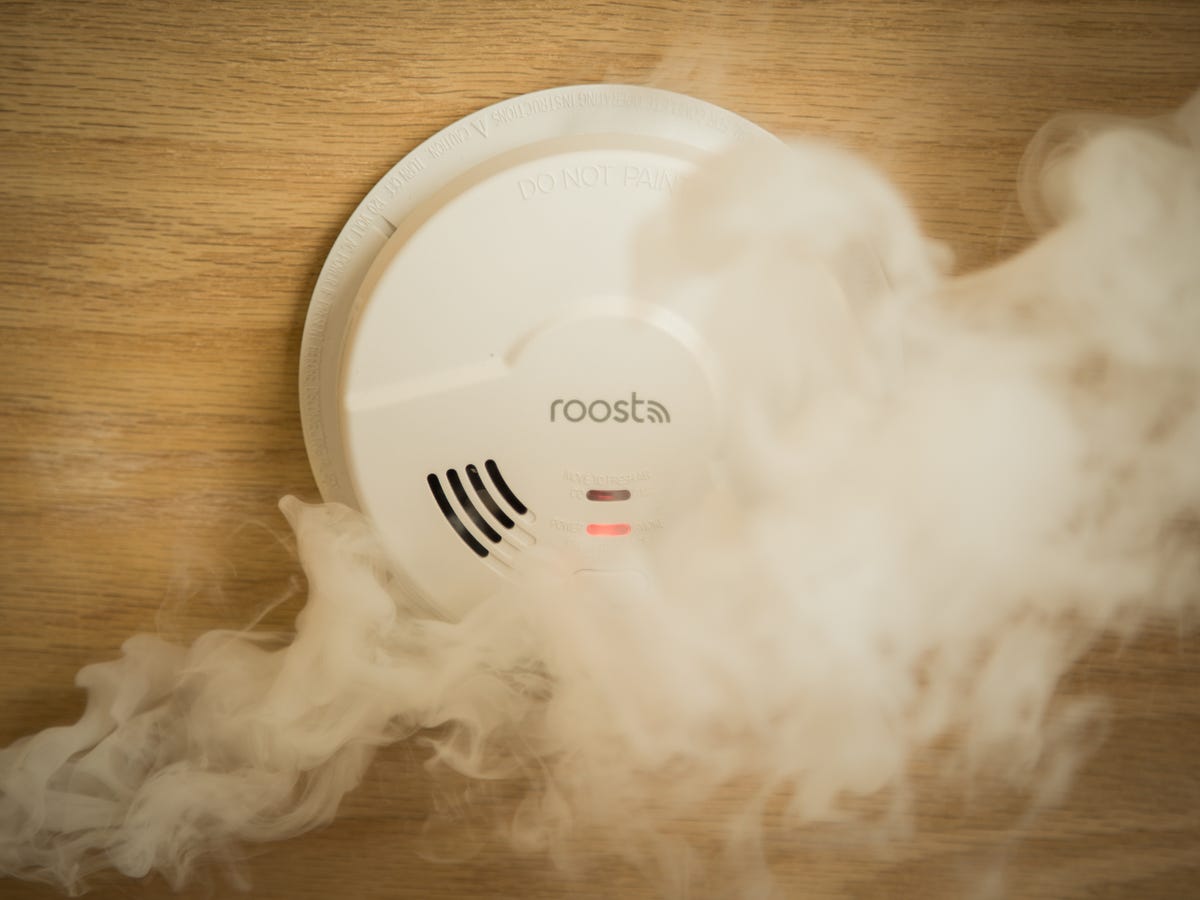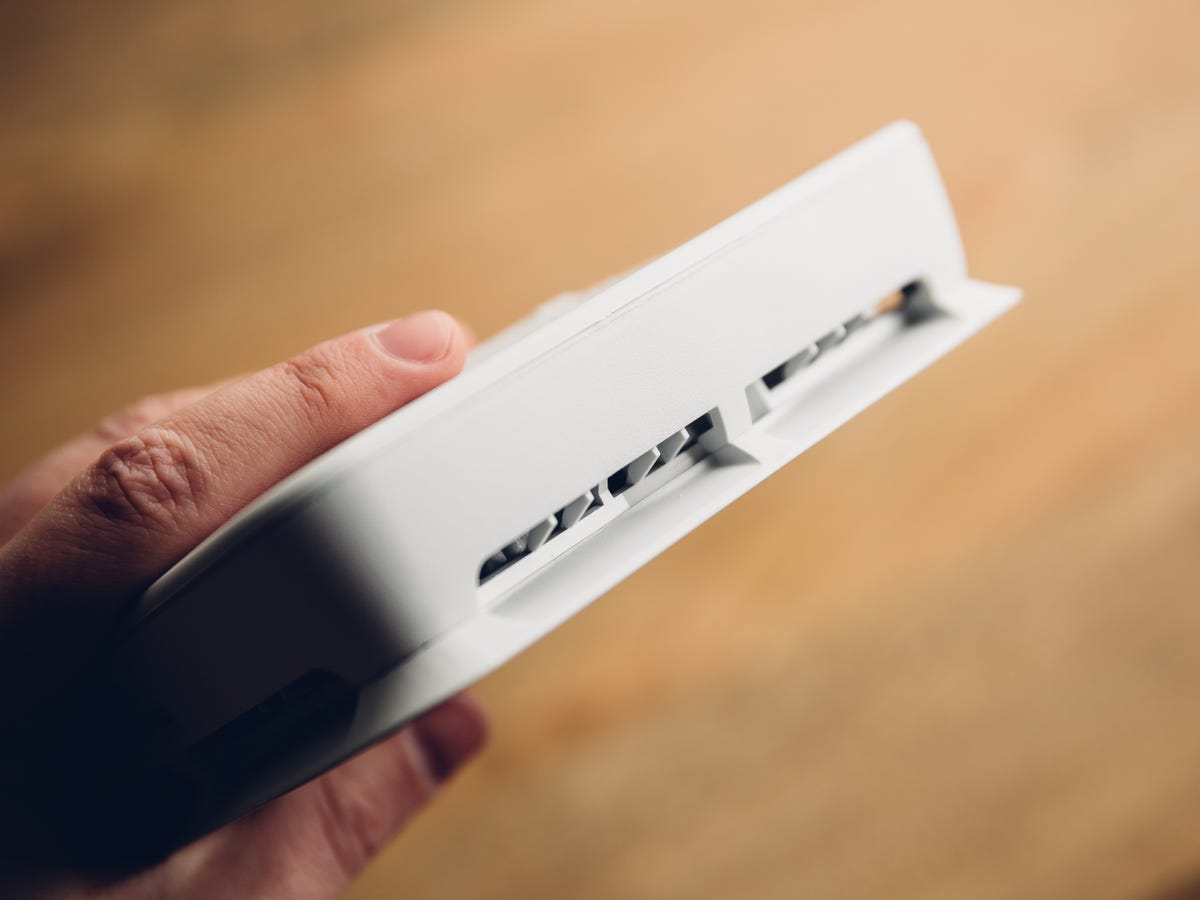The only way to know your smoke alarm is functioning and ready (except for letting your turkey burn in the oven) is to test it. And tests don’t just confirm that smoke detectors have power — they can also tell you if you need to switch out batteries before your alarm throws a high-pitched fit. Plus, you can learn if old detectors have failed without giving any sign.
Fortunately, smart and standard smoke detectors alike have a simple process for testing that every home-haver should know about. Here’s what to do if it’s your first time with a new smoke detector and warning signs to look for!
Read more: 8 Dangerous Mistakes to Avoid When Your Home Is Threatened By a Fire
1. Grab your ladder and clear some room
First, you’ll need a ladder high enough to easily reach the smoke alarms in your home. Use a ladder or sturdy step stool for this part, and don’t try balancing on a chair. Clear away anything obstructing your reach of the smoke detector.
Since you’ll be up close and personal with the alarm’s siren, you may want to equip yourself with a pair of earplugs or headphones before you start. And if you have any kids or pets in the house, get them as ready as possible for a few loud noises.

Close up of a Kidde fire detector’s test button.
2. Find the test/hush button on your smoke alarm
Climb up and take a close look at your smoke detector. You should see a manual button that’s often labeled “Test” or “Hush” (or both). These buttons are typically on the front of the smoke detector and designed for easy access, so they shouldn’t be too hard to spot. While you can check on the status of a smart smoke alarm with an app, this physical button is the only way for an effective, direct test.
3. Press and hold the test button to listen to the beeps
In a well-supported position, press down firmly on the test button and hold it down, usually between 3 to 6 seconds.
At this point, the smoke alarm should go off, and it should be loud. I’m talking about ear-piercing, “I really wish this wasn’t happening,” loud. Let it go off at least a few times. The siren should easily reach to every corner of your house. In larger homes, you may want to recruit your loved ones to stand at the opposite side of the house and make sure they can still hear it.
If the smoke alarm doesn’t sound, sounds weak or quickly trails off, then the smoke detector has a serious problem and needs more attention — see below!

Roost smoke detector with fog.
4. Hold down longer to test interconnected alarms
Many smoke alarm systems are interconnected, which means you can thankfully test them all by only testing one unit. I suggest taking a look at your manual or app for instructions on how to test interconnected alarms. Sometimes you don’t need to do anything but perform the test above. Other times, you may have to hold down the test button for a bit longer or for a second time.
Otherwise, repeat this process for each smoke alarm in your house.

Holding a One Link Wi-Fi alarm.
5. Replace batteries or smoke alarms as needed
If your smoke alarm is weak or doesn’t sound, start by replacing the battery in the detector, especially if it’s a wireless model — which are less common in homes, but even wired models will have a battery backup. Smoke detectors use either 9V batteries or AA batteries, so have a supply ready for times like these.
Test again, and if the smoke alarm still isn’t working, the detector could be defective, too worn out to work or have a wiring problem (people have even found cockroaches in their smoke detectors). It’s time to replace your detector with a new model, or find someone to manage the installation for you.

Specialized sprays help you test smoke detector sensors, too.
Optional: Use an aerosol smoke test spray to test sensors and more
The test button is the best way to check a smoke alarm’s siren and battery, but it’s not exactly testing the smoke sensors themselves. If you want to test these sensors, you can purchase a $16 can of “smoke” specifically designed to trigger smoke detectors. You can also use these to test smart home automations, such as if you have your smoke detector set to make smart bulbs flash when it goes off.
The good news is that these aerosol cans are easy to point and spray, so you probably won’t need to climb a ladder to use them. The bad news is that you can’t use them too often or you’ll wear out some of the sensors that smoke detectors use, especially in old models. These sensors can get clogged or bogged down by particles from repeated activations, making them less and less likely to function.
Note: Don’t use candles, matches, lighters or anything other burning material to test your smoke detectors. Not only does this create a small but real fire risk, these substances have thick smoke particles that can more easily jam delicate sensors and keep your smoke detector from working or shorten its life.
How often should you test smoke detectors?
Technically, it’s recommended to test smoke detectors every week or month. I know that’s a lot to ask for a busy home, but at least test your fire alarms once before the cold weather arrives and preferably again when the warmer months start heating up.
Finally, if you ever have any smoky incident like leaving bacon on the pan too long and your smoke detectors don’t activate, I suggest using this test to make sure they’re all working properly.
For a complete look at home safety, you may want to review our advice on what to do when a wildfire approaches, how to keep your security cameras safe in winter and the best ways to deter burglars before they actually break in.






















+ There are no comments
Add yours